![]()
July 30, 2006 | MatthiasKuentzel.de | By Matthias Kuentzel
Ahmadinejad’s world
This article can be read as part 2 of the previous article “The Basiji: Ahmadinejad’s demons.”
In pondering the behavior of Mahmoud Ahmadinejad, I cannot help but think of the 500,000 plastic keys that Iran imported from Taiwan during the Iran-Iraq War of 1980-88. At the time, an Iranian law laid down that children as young as 12 could be used to clear mine fields, even against the objections of their parents. Before every mission, a small plastic key would be hung around each of the children’s necks. It was supposed to open for them the gates to paradise.
“In the past,” wrote the semi-official Iranian daily Ettela’at, “we had child-volunteers: 14-, 15-, and 16-year-olds. They went into the mine fields. Their eyes saw nothing. Their ears heard nothing. And then, a few moments later, one saw clouds of dust. When the dust had settled again, there was nothing more to be seen of them. Somewhere, widely scattered in the landscape, there lay scraps of burnt flesh and pieces of bone.” Such scenes could henceforth be avoided, Ettela’at assured its readers. “Before entering the mine fields, the children [now] wrap themselves in blankets and they roll on the ground, so that their body parts stay together after the explosion of the mines and one can carry them to the graves.”
The children who thus rolled to their deaths formed part of the mass “Basij” movement that was called into being by the Ayatollah Khomeini in 1979. The Basij Mostazafan – the “mobilization of the oppressed” – consisted of short-term volunteer militias. Most of the Basij members were not yet 18. They went enthusiastically and by the thousands to their own destruction. “The young men cleared the mines with their own bodies,” a veteran of the Iran-Iraq War has recalled, “It was sometimes like a race. Even without the commander’s orders, everyone wanted to be first.”
The western media showed little interest for the Basiji – perhaps because journalists could not be present during the hostilities or perhaps because they did not believe the reports. Such disinterest has persisted to this day. The 5000 dead of Saddam Hussein’s poison gas attack on the Kurds of Halabja have remained in our memory. History has forgotten the children of the minefields.
Today, however, Ahmadinejad appears in public in his Basiji uniform. During the war, he served as one of the Basiji instructors who turned children into martyrs. The generation that fought in the Iran-Iraq War has come to power along with Ahmadinejad. He owed his election in Summer 2005 to the contemporary Basiji movement. In Fall, he announced a “Basiji Week.” According to a report in the newspaper Kayan, some 9 million Basiji heeded the call, “forming a human chain some 8,700 kilometers long…. In Tehran alone, some 1,250,000 people turned out.” In his speeches, Ahmadinejad praises the “Basiji culture” and the “Basiji power” with which “Iran today makes its presence felt on the international and diplomatic stage.” Ayatollah Ahmad Jannati, Chair of the Guardian Council, goes so far as to describe the very existence of Iran’s nuclear program as a triumph of those Iranians who “serve the Basiji movement and possess the Basiji-psyche and Basiji-culture.”
Far from being the subject of criticism, the sacrifice made of the Basiji in the war against Iraq is celebrated nowadays more than ever before. Already in one of his first television interviews, the new President enthused: “Is there an art that is more beautiful, more divine, more eternal than the art of the martyr’s death?” The Supreme Leader, Ali Khamenei, held up the war against Iraq, on account of the fearlessness of the Basiji, as a model for future conflicts.
This would already be reason enough for us to be interested in the history of the Basiji. But there is another reason. The deployment of the Basiji in the Iran-Iraq War is the primordial crime of political Islam: here the cult of the religiously-motivated suicide attack finds its origins. If we want to understand why a woman sits in the Palestinian parliament who is honored, above all, because she sent three of her five sons to martyrs’ deaths, if we want to know why still today 50,000 young Iranians volunteer for suicide missions – there is no avoiding the Basiji.
The Child-Basiji in War
In 1980, the Ayatollah Khomeini called the Iraqi invasion of Iran a “divine blessing.” The war provided the perfect opportunity to Islamize both Iranian society and the institutions of the Iranian state. Within no time, Khomeini’s fanatically devoted Revolutionary Guard – the Pasdaran – had been transformed into a proper army in its own right, complete with navy and air force. At the same time, the regime hastened to develop a popular militia: the Basij Mostazafan.
Within just a few weeks, teenage boys between 12 and 17 – as well as men over 45 – had been prepared for war. During training, lack of weaponry was compensated by a surplus of religious propaganda. When their training was done, each Basij received a blood-red headband that designated him a “Volunteer for Martyrdom.”
On the battlefield, the Basiji, representing 30% of the armed forces as such, constituted the greater part of the infantry. The Pasdaran represented some 40% of the armed forces and the regular army the remaining 30%. The members of the Pasdaran had generally obtained a higher level of education than the Basiji, who mostly came from the countryside and were often illiterate. While the Basiji were sent to the frontlines, the Pasdaran brought up the rear. As a rule, the Pasdaran would be sent into battle when successive waves of Basiji had already been killed off.
The human wave tactic was implemented as follows: the barely armed children and teenagers had to move continuously forward in perfectly straight rows. It did not matter whether they fell as canon fodder to enemy fire or detonated the mines with their bodies: the important thing was that the Basiji continued to move forward over the torn and mutilated remains of their fallen comrades, going to their deaths in wave after wave. The tactic produced some undeniable initial successes for the Iranian side. “They come toward our positions in huge hordes with their fists swinging,” an Iraqi officer complained in Summer 1982, “You can shoot down the first wave, and then the second. But at some point the corpses are piling up in front of you, and all you want to do is scream and throw away your weapon. Those are human beings, after all!” By Spring 1983, the Pasdaran had sent some 450,000 Basiji in shifts to the front. After three months, whoever survived his deployment was sent back to his school or workplace.
How were the Basiji recruited? Principally, in the schools: the Pasdaran sent “special” educators who hand-picked their martyrs from the obligatory paramilitary exercises. Propaganda films – like the 1986 television film “A Contribution to the War” – praised this alliance between students and the regime against those parents who tried to save their children’s lives.
Secondly, the regime employed incentives. Thus, in a campaign called “Sacrifice a Child for the Imam”, every family that lost a child on the battle field was offered interest-free credit and other generous benefits. Moreover, enrollment in the Basij gave the poorest of the poor a chance for social advancement. Basiji reservists are still today treated as protégés of the Mullah-regime.
Thirdly, the regime employed coercive measures. The following story of young Hossein, which was documented by the German weekly der Spiegel in 1982, is merely one among thousands:
“Why did you enlist?” The youngster in the camouflage fatigues, with both sleeves and pants legs rolled up, doesn’t answer. “His name is Hossein. He doesn’t know his family name,” the translator says. The boy is twelve at most. His face is gaunt, his body is bent forward, he breathes in spurts. One can see that he has trouble staying on his feet. “Polio,” the translator says. …Hossein comes from Mostalbar, a tiny spot somewhere between Shiraz and Bandar Abbas. …One day some unknown Imams turned up in the village. They called the whole population to the plaza in front of the police station and they announced that they came with good news from Imam Khomeini: the Islamic Army of Iran had been chosen to liberate the holy city Al-Quds – Jerusalem – from the infidels. …Hossein had no choice. The local Mullah had decided that every family with children would have to furnish one soldier of God. Because Hossein was the most easily expendable for his family and because, in light of his illness, he could in any case not expect much happiness in this life, he was chosen by his father to represent the family in the struggle against the infidel devils.
Of the twenty children that went into battle with Hossein, only he and two others survived.
In 1982, during the retaking of the city of Khorramshahr, 10,000 Iranians died. Following “Operation Kheiber”, in February 1984, the corpses of some 20,000 fallen Iranians were left on the battle field. The “Karbala Four” Offensive in 1986 cost the lives of more than 10,000 Iranians. All told, some 100,000 men and boys are said to have been killed during the Basiji operations. Why did the Basiji rush with such fervor to their own destruction?
The Martyrs of Karbala
At the very outset, the Mullahs did not send human beings into the mine fields, but rather animals: donkeys, horses, and, above all, dogs. But the tactic proved useless: “After a few donkeys had been blown up, the rest ran off in terror,” Mostafa Arki reports in his book Acht Jahre Krieg im Nahen Osten [Eight Years of War in the Middle East]. The donkeys’ reacted normally. Fear of death is natural. The Basiji, on the other hand, marched fearlessly and uncomplaining – as if guided by an invisible hand – to their deaths. The curious slogans that they chanted while entering the battle fields are worthy of note: “Against the Yazid of our time!”, “Hussein’s Caravan is Moving On!”, “A New Karbala Awaits Us!”.
Yazid, Hussein, and Karbala: three essential references of the Shia religion. The primordial myth of the Shia concerns the Battle of Karbala of 680 that opposed the founders of Sunni and Shia Islam. The key figure in Shia doctrine is the Imam Hussein, the grandson of the Prophet Muhammad. Hussein led an uprising against the “illegitimate” Caliph Yazid. But Hussein’s uprising was betrayed by the very persons who had sworn to serve him faithfully. The shame of this “original sin” of the Shia generates unconditional loyalty to the religious leadership to this day. On the plain of Karbala, on the tenth day of the month of Muharram, Hussein and his entourage were attacked and defeated by a numerically superior force under the leadership of Yazid. Hussein’s corpse bore the marks of 33 lance punctures and 34 blows of the sword. His head was cut off and the remaining trunk of his body was trampled by horses. Ever since, the martyrdom of Hussein provides the core of Shia theology and the Ashura Festival that commemorates it is the holiest day of the Shia. Men beat themselves with their fists or flagellate themselves with iron chains, in order to approximate the sufferings of Hussein. These rituals are pre-Islamic in nature: the Shia adapted them from Zoroastrian and pagan traditions.
In his study Crowds and Power, the Nobel-Prize winner Elias Canetti documents a first-hand report on the Ashura Festival as it occurred in around 1850 in Tehran. This report prefigures some of what we find so incomprehensible in the behavior of the Basiji:
500,000 people, in the grip of delirium, cover their heads with ashes and beat their foreheads against the ground. They want to subject themselves voluntarily to torments: to commit suicide en masse, to mutilate themselves with refinement. …Hundreds of men in white shirts come by, their faces ecstatically raised toward the sky. Of these, several will be dead this evening, many will be maimed and mutilated, and the white shirts, dyed red, will be burial shrouds. …Others, who were not at first among the volunteers for self-sacrifice, suddenly discover their thirst for blood amidst the general uproar. They demand weapons, rip off their clothes, and tear their flesh. …There is no more beautiful destiny than to die on the Festival of Ashura. The gates of the eight Paradises are wide open for the holy and everyone tries to get through them.
Even if the bloody excesses of the sort here described are prohibited in contemporary Iran, Khomeini took over the essence of the ritual as a symbolic act and politicized it. He took the inward-directed fervor and channeled it toward the external enemy. He transformed the passive lamentation into active protest. He made the Battle of Karbala the prototype of the uprising against tyranny. Already during the demonstrations against the Shah in 1978, many protestors wore funeral shrouds in order to tie the Ashura-Cult to current political struggles. In the war against Iraq, the allusions to Karbala were given still greater significance: on the one hand, the scoundrel Yazid in the form of Saddam Hussein; on the other, the Prophet’s grandson Hussein, for whose suffering the time of Shia revenge had finally come.
But why should the Basiji lose their lives in this struggle against evil? Here the theology of Khomeini provides the key. According to his theological worldview, life is worthless and death is the beginning of genuine existence. “The natural world,” Khomeini explained in October 1980, “is the lowest element, the scum of creation.” What is decisive is the beyond: the “divine world, that is eternal.” This latter world is accessible to martyrs. Their death is no death, but merely the transition from this world to the world beyond, where they will live on eternally and in splendor. Whether the warrior wins the battle or loses it and dies a martyr – in both cases, his victory is assured: either a mundane or a spiritual one.
This attitude had a fatal implication for the Basiji: whether they survived or not was a matter of indifference. Not even the usefulness of their sacrifice mattered. Military victories are secondary, Khomeini explained in September 1980. The Basij must “understand that he is a ‘soldier of God’ for whom it is not so much the outcome of the conflict as the mere participation in it that provides fulfillment and gratification.” Could Khomeini’s antipathy for life have had as much effect in the war against Iraq without the Karbala myth? Probably not. With the word “Karbala” on their lips, the Basiji went elatedly into to battle. And much of Iranian society went with them. Ali Khamenei, the current Supreme Leader, praised Iranian mothers who accepted congratulations instead of condolences for the loss of their sons. Rafsanjani, the current number two man in Iran, recounted the story of the children of soldiers killed in Karbala: “the children pulled on their funeral shrouds, took the swords of their fathers, and they were ready to sacrifice their lives.” And then he ridiculed the commanders of the regular Iranian Army, because the latter wanted to prohibit the families from sending their children to the front. But the children, according to Rafsanjani, did not agree. Rafsanjani asked the public whether, in light of this “adult” attitude, one could really still consider such children as minors.
The Myth of the Imam
Nevertheless, when the courage in face of death of the Basiji seemed to wane, the regime put on a show. A mysterious horseman on a magnificent steed would suddenly appear at the front. His face – covered in phosphorous – would shine. His costume was that of a medieval prince. The child soldier Reza Behrouzi, whose story was documented in 1985 by Freidoune Sehabjam in France, reports that the soldiers reacted with a mixture of panic and rapture.
Everyone wanted to run toward the horseman. But he drove them away. “Don’t come to me!” he shouted, “Charge into battle against the infidels! …Revenge the death of our Imam Hussein and strike down the progeny of Yazid!” As the figure disappears, the soldiers cry: “Oh, Imam Zaman, where are you?” They throw themselves on their knees, and pray and wail. When the figure appears again, they get to their feet as a single man. Those whose forces are not yet exhausted, charge the enemy lines.
The mysterious apparition who was able to trigger such emotions is the “Hidden Imam”: a mythical figure who influences the thought and action of Ahmadinejad to this day. The Shia call the male descendants of the Prophet Muhammad “Imams” and ascribe to them a quasi-divine status. Hussein, who was killed at Karbala by Yazid, was the third Imam. His son and grandson were the fourth and fifth. At the end of this line, there is the “Twelfth Imam,” who is named Muhammad. Some call him the Mahdi (the “divinely guided one”), others Imam Zaman (from sahib-e zaman: “the Ruler of Time”). He was born in 869, the only son of the eleventh Imam. In 874 he disappeared without a trace. Thereby, the lineage of Muhammad came to a close. In Shia mythology, however, it continued. The Shia believe that the Twelfth Imam merely withdrew from public view when he was five and that he will sooner or later emerge from his “occultation” in order to liberate the world from evil.
The Nobel Prize winner V.S. Naipaul has shown how deeply rooted the belief in the coming of the Shia messiah is among the Iranian population. In his Among the Believers: An Islamic Journey, he describes seeing posters in post-Revolutionary Tehran bearing motifs similar to those of Maoist China: masses, for instance, who raise rifles and machine-guns in the air as if in greeting. The posters always bore the same phrase: “Twelfth Imam, We are Expecting You”. Naipaul writes that he could grasp intellectually the veneration for Khomeini. “But the idea of the revolution as something more, as an offering to the Twelfth Imam, the man who had vanished … and remained ,in occultation,’ was harder to seize.” According to Shia tradition, legitimate Islamic rule can only be established following the reappearance of the Twelfth Imam. Until that time, the Shia have only to wait, to keep their peace with illegitimate rule, and to remember the Prophet’s grandson Hussein in sorrow. Khomeini, however, had no intention of waiting. He invested the myth with an entirely new sense: the Twelfth Imam will only emerge when the believers have vanquished evil. To speed up the Mahdi’s return, Muslims had to shake off their torpor and fight.
This activism had more in common with the revolutionary ideas of Egypt’s Muslim Brotherhood than with Shia traditions. Khomeini had been familiar with the texts of the Muslim Brothers since the 1930s and he agreed with the Brothers’ conception of what had to be considered “evil”: namely, all the life-affirming achievements of modernity that replaced divine providence by individual self-determination, blind faith by doubt, and the stern morality of the Sharia by sensual pleasures. According to legend, Yazid was the embodiment of everything that was forbidden: he drank wine, enjoyed music and song, and played with dogs and monkeys. And was not Saddam Hussein just the same? In the war against Iraq, “evil” was clearly defined and vanquishing evil was the precondition for hastening the return of the beloved Twelfth Imam. When he at least let himself be seen for a few minutes riding his white steed, the readiness to die a martyr’s death increased exponentially.
The loss of the instinct for self-preservation among the Basiji will remain a mystery for us. There are, nonetheless, certain factors that help to explain it: firstly, Khomeini’s religious doctrine, which elevates the “after-life” above life in this world; secondly, the tradition of veneration of martyrs peculiar to the Shia; thirdly, the expectation of salvation that is connected to the doctrine of the Twelfth Imam; and, finally, the mixture of brain-washing and material incentives with which that Mullah-regime was able to instrumentalize this cultural heritage toward meeting its military objectives.
For hundreds of years, the Shia variant of Islam stood for quietism and non-violence. Khomeini had subjected the tradition to a radical Jihadist reinterpretation. The myth of self-sacrifice reinforced the idea of salvation and vice-versa: the more selfless the sacrifice, the more imminent the advent of the Imam; and the closer redemption by the Mahdi, the greater the readiness for martyrdom.
From the Basiji to the Suicide Bomber
Nobody was more surprised by the effectiveness of his propaganda than Khomeini himself. “When Iranians go to war, they act as if they are going to a wedding,” he exulted in September 1982, “Even in the earliest days of Islam, we didn’t have that.” And indeed the history of Islam, though not lacking in atrocities, had never known acts like those of the Basiji. Moreover, Khomeini’s policy did not only represent a rupture with the traditions of Islam, it was also at odds with the Quran. Thus Sura 2, verse 195 reads: “Cast not yourselves to destruction with your own hands.” Sura 4, verses 29-30 are still more explicit: “And do not kill yourselves. Verily, Allah is Most Merciful to you. And whosoever does so in enmity and wrong, verily, We shall let him burn in Fire.”
While it is true that in the 1930s, the Muslim Brothers had already established the motto “Victory or Martyrdom”, they aimed at assuring that every Muslim who found himself against his will in a hopeless situation would sacrifice his life rather than capitulate. The Basiji, however, rushed to certain death in a situation that was not hopeless: such a practice was completely alien to the Muslim Brothers. This is the most significant legacy of the Ayatollah Khomeini. The destructive energy that would find its most condensed expression in the attacks of September 11th had its origin in the sacrifice of the Basiji.
It is true that there were already suicide attacks against Israelis in the mid-1970s. But these were the work of Marxist-oriented groups like the PFLP-GC. The first Islamically-motivated suicide attack against Israel took place in southern Lebanon on November 11, 1982. The perpetrator was the 15-year-old Ahmad Qusayr: a follower of the then only just emerging Shia militia, Hizbullah. He had been inspired by the model of the Basiji. Khomeini personally consecrated the act of the 15-year old with a Fatwa. Later, he had a memorial built for Ahmad Qusayr in Tehran. Following the lead of Hizbullah, in 1993 the Sunni Hamas likewise began to employ suicide bombings. In the meanwhile, Khomeini’s innovation has become the calling card of Islamist movements throughout the world.
Until 1982, for a mother cheerfully to accept congratulations upon the massacring of her son only seemed possible in the Islamic culture of Iran, marked as it was by the legend of Karbala. Now, however, since the start of the Second Intifada, the extinguishing of every trace of normal human instinct seems to have become a cultural norm also in the Palestinian territories. Moreover, all the military victories that the Islamists have been able to claim – Israel’s withdrawal from Lebanon, the evacuation of the Gaza Strip, the destruction of southern Manhattan, or the series of massacres in Iraq – have been achieved by using the weapon devised by Khomeini. “The Palestinians say that their popular awakening followed the teaching of the Imam Khomeini,” Khomeini’s successor, Ali Khamenei, explained in 2004, “the Lebanese say that they attribute their victory over the Zionists to the school of the Imam. The entire Islamic elite… conducts its victorious battles on the basis established by the political school of the Imam.”
And, in fact, the seed spread by Khomeini is bearing fruit today. This seed, however, is contaminated by Khomeini’s crime: the deliberate sending of thousands of children to their deaths in the deserts of western Iran. Every contemporary suicide attack still bears traces of this crime. In the first place, it should be remembered that the Basiji were not led to their deaths for defensive purposes; secondly, that the waves of suicide attacks served only to kill other Muslims; and thirdly, that in systematically propagating the passion for self-destruction Khomeini thereby violated the precepts of the Quran.
From the Desert to the Laboratory: Ahmadinejad’s “Second Revolution”
Today, the Basiji are present in Iran in every town, every neighborhood and every mosque. Basiji groups are divided into paramilitary units and “special” units. They fall under the direction of the Supreme Leader Ali Khamenei and are sworn to absolute loyalty toward him. The million strong army of the Basiji is recruited from the more conservative and impoverished parts of the population, which profit from the Basiji social programs. Since 1998, the Basiji have been deployed, above all, as a “vice squad” and their special units have been used as shock troops against opposition forces – as in both 1999 and 2003, for instance, during the suppression of the student movement.
In the summer 2005 Presidential elections, the urban middle classes voted for Rafsanjani. Ahmadinejad came to power as the candidate of the Basiji. His “second revolution” aims to eradicate corruption and eliminate western influences from Iranian society. It is directed, in particular, against those sections of Iranian youth who during the Presidency of Khatami enjoyed a taste of individual freedoms. In this revolution, the Basiji are expected to play the role of a sort of Iranian SA.
Since the Presidential elections, the influence of the Basiji has continuously grown. At the end of July 2005, the movement announced plans to increase its membership from 10 million to 15 million by 2010. The “special units” are supposed to comprise some 150,000 persons by then. Accordingly, the budget for the Basiji movement has been considerably augmented. Furthermore, the Basiji have received new powers in their function as an unofficial division of the police. What this unofficial function means in practice was made clear in February 2006 when the Basiji attacked the leader of the striking bus drivers union, Massoud Osanlou. They held Osanlou prisoner in his apartment and they cut off the tip of his tongue, in order to convince him to keep quiet. No member of the Basij need fear being held responsible for such acts of terror before a court of law.
The highpoint of this new offensive was reached with the “Basiji Week” in November 2005. Some nine million people, 12% of Iran’s population of 70 million, came out to demonstrate. Barely noticed by the western media, this mobilization attests to Ahmadinejad’s determination to impose his “second revolution” at all costs against the internal opposition. This “revolution” shows clearly fascistic traits and is meant to extinguish the first sparks of freedom in Iran. And what has the West done to support the forces of freedom in Iran? Up until now, very little. The Europeans in particular have given priority to their commercial interests over the defense of human rights.
The second function of the Basiji is to provide mass publicity for martyrdom. There is no “truth commission” in Iran to investigate the state-planned collective suicide that took place from 1980 to 1988. Instead, every Iranian is taught from childhood the virtues of martyrdom. Everyone knows the name of Hossein Fahmideh, who in 1982, as a 13-year-old boy, blew himself up in front of an Iraqi tank. His image accompanies Iranians throughout their day: whether on postage stamps or the currency. If you hold up a 500 Rial bill to the light, it is his face that you will see in the watermark. The self-destruction of Hossein Fahmideh is depicted as a model of profound faith by the Iranian media. It has been the subject, for instance, of both an animated film and an episode of the TV series “Children of Paradise”. As a symbol of their readiness to die for the Revolution, Basiji groups wear white funeral shrouds over their uniforms during public appearances.
During this year’s Ashura Festival, school classes were again taken on excursions to a “Martyrs Cemetery”. “They wear headbands painted with the name Hussein,” The New York Times reported, “and march beneath banners that read: ‘Remembering the Martyrs today is as important as becoming a Martyr’ and ‘The Nation for whom Martyrdom means happiness, will always be Victorious.’ Since 2004, the mobilization of Iranians for suicide brigades has intensified, with recruits being trained for foreign missions. Thus, a special military unit has been created bearing the name the “Commando of Voluntary Martyrs”. According to its own statistics, this commando has so far recruited some 52,000 Iranians to the suicidal cause. It aims to form a “Martyrdom Unit” in every Iranian province. “The enemy is afraid that this culture will develop into a global culture,” boasts the leader of the commando, Mohammadresa Jafari. The fervor for death as “global culture”? Pure delirium as the paradigm of Islam?
Of course, the numerous Iranians who admire Western lifestyles would reject such an imputation, as would the majority of Muslims throughout the world. But here too, the West has failed. Instead of condemning suicide bombing without exception as a crime against humanity and pushing for a United Nations resolution to this effect, western reactions have in this connection as well been marked by opportunism. The international condemnation of suicide terror is, however, an essential condition for the isolation of Iran.
In the context of the Iranian nuclear program, the Basiji cult of self-destruction amounts to a lit fuse. Even just a brief look at the Iranian Constitution makes clear that there can be no question of Iran limiting its program to peaceful ends. Article 151 lays down on the authority of the Quran: “Prepare against them whatever force you are able to muster, and horses ready for battle, striking fear into God’s enemy and your enemy.”
Nowadays, Basiji are sent not into the desert, but rather into the laboratory. Basiji students are encouraged to enroll in technical-scientific disciplines. According to a spokesperson for the Revolutionary Guard, the aim is to use the “technical factor” in order to augment “national security”. But what is the implication of atomic weapons in the hands of those who interpret death in the battle field as a spiritual triumph?
In December 2001, then Iranian President Hashemi Rafsanjani broached this question. He explained that “the use of even one nuclear bomb inside Israel will destroy everything”. On the other hand, even in the case of a nuclear response on the part of Israel, it “will only harm the Islamic world. It is not irrational to contemplate such an eventuality.” Rafsanjani thus spelled out the terms of a macabre cost-benefit analysis. It will not be possible to destroy Israel without suffering damage in turn. But for Islam the level of damage that Israel’s nuclear response could inflict is, nonetheless, bearable. Some hundred thousand or so additional martyrs for Islam – the price is not to high to pay.
Rafsanjani’s counting on a hundred thousand deaths might seem on first glance like a worst-case scenario. But it is not. For Rafsanjani is a representative of the “pragmatic” wing of the Iranian Revolution. In contrast to the apocalyptic wing of the Revolutionary Guard, who in 1988 wanted to pursue the war against Iraq no matter the costs, the “pragmatists” are concerned that any war should have a “worthwhile” outcome. What atomic weapons could mean in the hands of the “apocalyptic” faction is virtually unimaginable.
Ahmadinejad, however, is clearly predisposed toward apocalyptic thinking. The linchpin of his politics is the myth of the Hidden Imam. In September 2005, he concluded his first speech before the United Nations by imploring God to bring about the return of the Twelfth Imam. He finances a research institute in Tehran whose sole purpose is to study and, if possible, accelerate the coming of the Imam. “The most important task of our Revolution is to prepare the way for the return of the Twelfth Imam,” he stressed at a theology conference in November 2005.
A politics pursued in alliance with a supernatural force necessarily becomes unpredictable. Why should an Iranian President take into account the reality principle when his assumption is that in three or four years the Savior will be taking over the controls in any case? In expecting the advent of the Messiah, who would be prepared for compromise? In any case, up to now Ahmadinejad has kept on his course toward confrontation with evident pleasure.
The West has been declared the enemy and Western music – from Mozart to Madonna – banned from the airwaves. With his threats against Israel’s existence, the option of a new epochal crime against Jews has been elevated to government policy. Inasmuch as Ahmadinejad declares the Twelfth Imam a reality, but the Holocaust a myth, he takes his leave from the international community known as the “United Nations.” Whoever ridicules Auschwitz as a myth, must thereby transform Jews into the universal enemy, who for filthy Mammon has deceived humanity for 60 years and who controls the world’s media and universities.
Ahmadinejad’s anti-Semitism bears resemblance to that of the Nazis, even if he replaces the term “Jew” by “Zionist”: the Zionists fabricated the Danish Muhammad cartoons; the Zionists brought about the attacks on Shia holy places in Iraq; the Zionists have for sixty years now blackmailed “all western governments”; the Zionists have enslaved the German government.
It would be an error to dismiss Ahmadinejad as a crank. Though his goals may be demented, he pursues them with obvious intelligence. He casts himself in the role of the global populist. His speeches address the “oppressed” throughout the world. He cultivates good relations with Fidel Castro and Venezuela’s President Hugo Chávez, and he has announced his intention to participate in the summit of non-aligned states in September 2006 in Havana.
Iran’s conduct of its war with Iraq between 1980 and 1988 provided a glimpse of things to come. What began with the clearing of mine fields by human detonators has become in the form of suicide bombing the most powerful weapon of the Islamist movement worldwide. The kitschy shows in the desert, with hired actors in the role of the Hidden Imam, have evolved into a showdown between a zealous Iranian President and the western world. The Basij who once upon a time wandered the desert armed only with a walking stick is today working as a chemist in a uranium enrichment facility.
Our look back at the history of the Basiji shows us that the greatest monstrosities have to be expected as a matter of course from the current Iranian regime. Today, the political isolation of Iran is a necessity. So long as the Iranian leadership refuses to recognize the reality and tragedy of the Holocaust, Iran’s membership in the UN should be suspended.
Box 1: The Iran-Iraq War
In February 1979, Khomeini’s revolution triumphs in Iran. Next door in Iraq, Saddam Hussein becomes President in July 1979. Khomeini calls on the Shia of Iraq “to rise up against the criminal murderer Saddam Hussein and his clan.” Clandestine organizations in Iraq receive funding from Tehran. For propaganda purposes, Iranian radio transmitters are set up close to the Iraq border.
The response from Hussein comes in September 1980 with the invasion of Iran. Cities like Abadan are occupied by Iraqi troops. Four months later, the Iranian counterattack begins. In March 1982, Iran for the first time deploys Basiji commandos. In Summer 1982, Iraq offers to negotiate a truce. Iran rejects the offer. In August 1988, Khomeini finally gives in following several years of a war of attrition. 750,000 Iranians lose their lives in the war, 1,200,000 are wounded. Iraq suffers some 340,000 dead and 700,000 wounded.
Box 2: The Pasdaran vs. the Regular Army
In the war against Iraq, Khomeini could not do without the regular Iranian armed forces that had been built up under the Shah. But he mistrusted them and tried to limit their influence. To this end, the Revolutionary Guard (Pasdaran) were developed into a second army. Until 1980, the tasks of the 25,000 strong organization consisted of enforcing the prescribed virtues of the Sharia and murdering regime opponents. But by 1985, the Pasdaran forces, of which Ahmadinejad was a member, were already with their some 450,000 troops more powerful than the 350,000 strong regular armed forces.
In Summer 1982, the tensions between the “revolutionary” and “conventional” military approaches came to a head. Following a Basiji deployment, Iran had beaten back the Iraqi offensive and restored the pre-war status quo. At this point, the regular army wanted to end the war, to accept Saddam’s offer of negotiations, and to avoid any further deployments of the Basiji. On all three points, Khomeini and the Pasdaran resisted and prevailed. Starting in 1982, the war was pursued as a war of conquest.
In 1988, the same differences again came to the fore. Despite the hopeless military situation, the Pasdaran wanted at all costs to escalate their revolutionary war efforts. This time, however, Hashemi Rafsanjani, as Commander in Chief of the united armed forces, accepted the truce. Khomeini sided with Rafsanjani. When, in Summer 2005, Ahmadinejad defeated his former and current rival Rafsanjani with the help of his friends from the Pasdaran, this also represented the revenge of the Pasdaran for their defeat in the 1988 power struggle.



 RSS
RSS

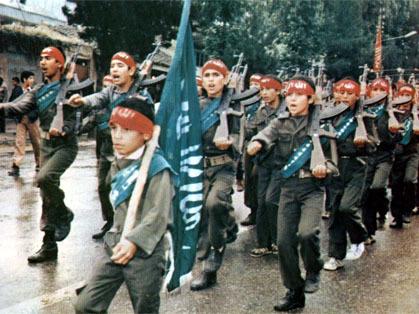
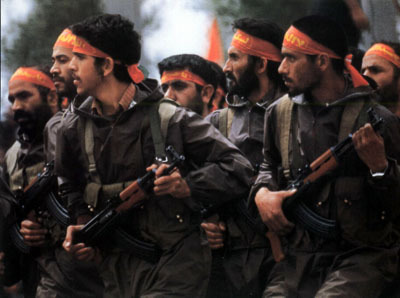
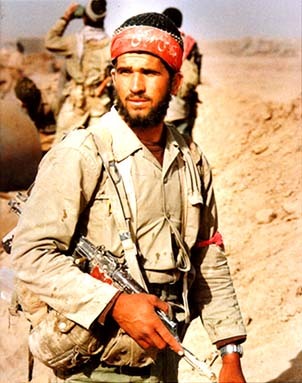
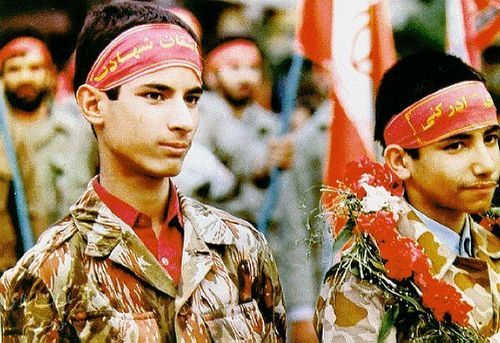
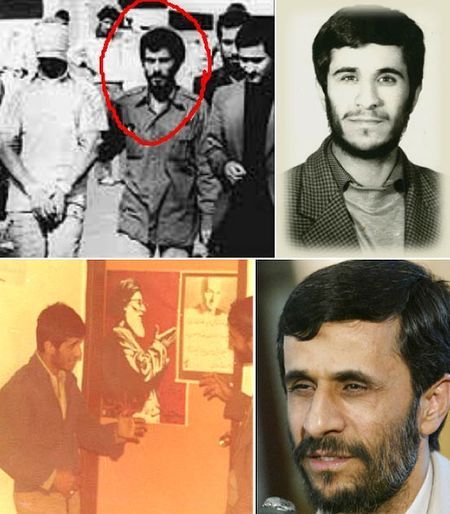
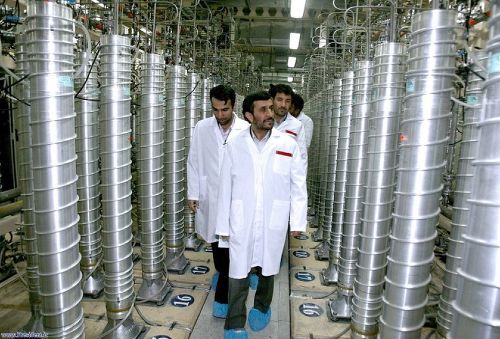
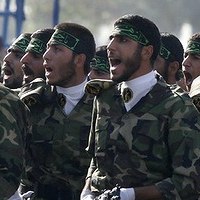

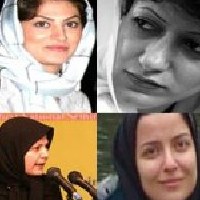
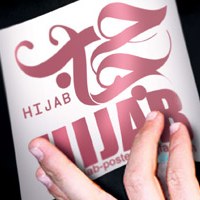
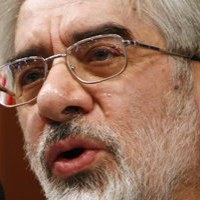




Ahmadinejad’s world (2nd Part to AN demons) http://bit.ly/16dJKp #Iranelection OMG)
Ahmadinejad’s world (2nd Part to AN demons) http://bit.ly/16dJKp #Iranelection OMG)
RT @Arianirani: Ahmadinejad’s world (2nd Part to AN demons) http://bit.ly/16dJKp #Iranelection #Iran OMG)
RT @Arianirani: Ahmadinejad’s world (2nd Part to AN demons) http://bit.ly/16dJKp #Iranelection #Iran OMG)
RT @Arianirani: Ahmadinejad’s world (2nd Part to AN demons) http://bit.ly/16dJKp #Iranelection OMG)
RT @Arianirani: Ahmadinejad’s world (2nd Part to AN demons) http://bit.ly/16dJKp #Iranelection OMG)
RT @parsa4: RT @Arianirani: Ahmadinejad’s world (2nd Part to AN demons) http://bit.ly/16dJKp #Iranelection OMG)
RT @parsa4 RT @Arianirani : Ahmadinejad’s world (2nd Part to AN demons) http://bit.ly/16dJKp #Iranelection OMG)
RT @parsa4 RT @Arianirani : Ahmadinejad’s world (2nd Part to AN demons) http://bit.ly/16dJKp #Iranelection OMG)
RT @parsa4: RT @Arianirani: Ahmadinejad’s world (2nd Part to AN demons) http://bit.ly/16dJKp #Iranelection OMG)
[…] want to read some excellent articles written by Matthias Kuntzel: The Basiji: Ahmadinejads demons or Ahmadinejad’s world or From Khomeini to […]
[…] have all women behind veils and the whole world under Islamic Sharia Law. Not with a dictator like Ahmadinejad, who is devoted to erase Israel from this world and hail the coming Islamic Messias “the […]
now when i know past of ahmadinejad a lil better it seems i understand more about him. he is pretty cruel person and it seems he is really fanatic. it makes him even more dangerous-people who just about power or money are easer to deal with.